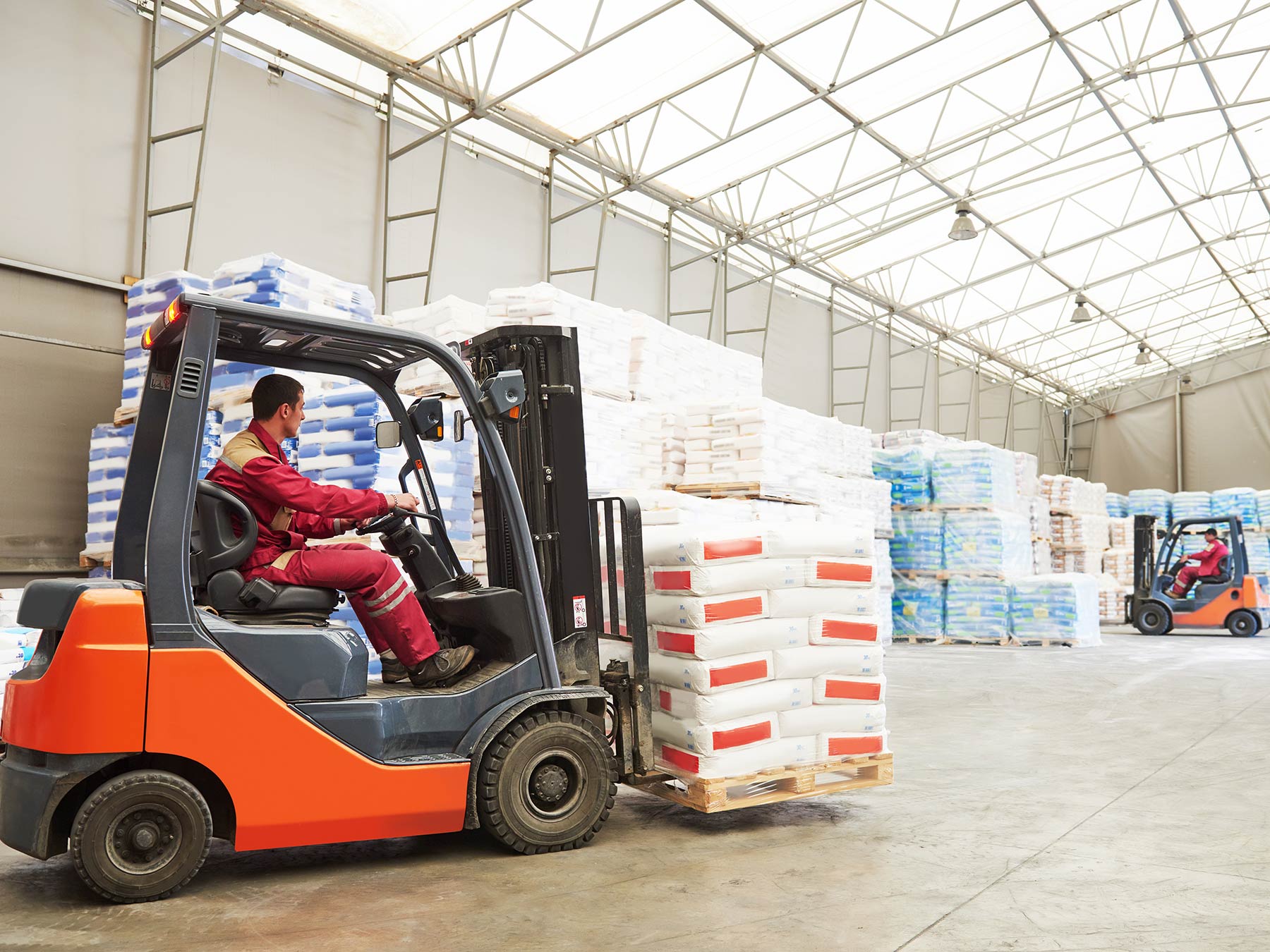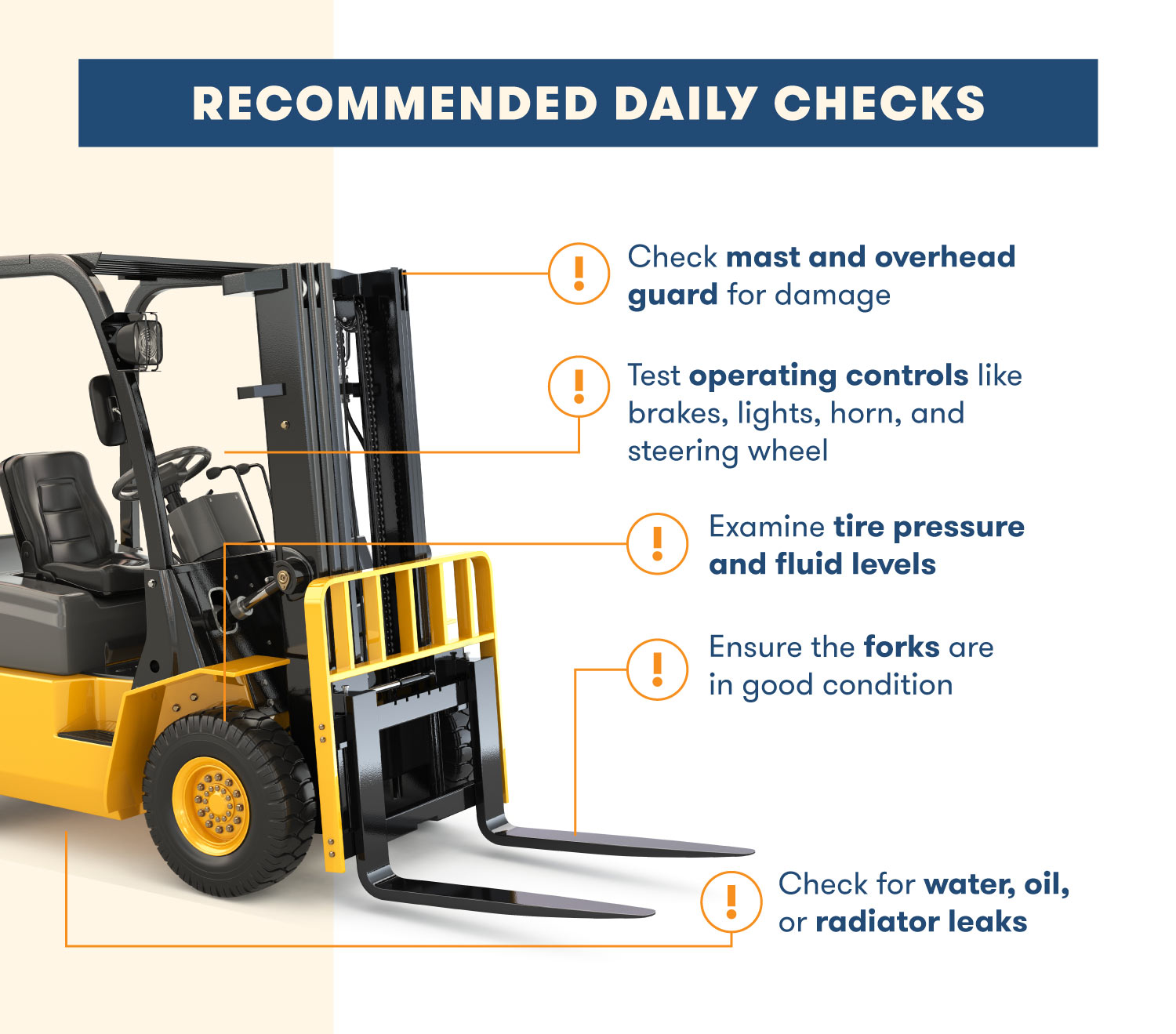Media Coverage
The 15 Forklift Safety Tips To Avoid Injuries
Counts:854 Time: 21-02-21 From: Suzhou Teknect Engineering Co., Ltd.
The forklift is one of the most commonly used pieces of equipment on the worksite. These powered industrial trucks are used to lift and transport loads with deft and precision. Although forklifts are powerful, there is risk involved in operating any industrial machine. With over an estimated one million forklifts estimated to be in operation, it’s essential to ensure crews are trained on proper safety measures.
The Occupational Health and Safety Administration (OSHA) estimates that forklift accidents cause roughly 34,900 serious injuries and 85 fatal accidents every year. Even more alarming is that 25 percent of these accidents are the result of inadequate training, showing the importance of educating every worker on the critical rules of safe forklift operation.
By brushing up on forklift training, you and your team can rest easy knowing that everyone’s safety is intact on the worksite. Here are the most essential tips for forklift safety.
1. Get Forklift Certification
Since many accidents are due to poor training, it is recommended that only those who have been trained and licensed in accordance with OSHA standards be responsible for operating a forklift. Employers should evaluate their employees’ performance at least once every three years and supplement training with lectures, videos, software training, and demonstrations.

2. Wear Proper Clothing
Forklift operators should be dressed with the appropriate safety equipment, including safety shoes, hard-hats, and a high-visibility jacket. Make sure to tuck away loose clothing to prevent it from getting caught on the forklift.
3. Know the Forklift Class
OSHA recognizes many different forklift types and classifications. Since each type has its own structure, weight limit, traveling speed, turning radius, and usage, it’s important to know your equipment in order to follow the best safety practices.
4. Inspect the Equipment Daily
Forklifts should be thoroughly inspected before every use. Daily checks with the shift supervisor are recommended to identify and log any problems or defects. Any equipment that requires repair should never be operated. Some of the recommended checks include:
- Test operating controls such as brakes, lights, horn, and steering wheel
- Check mast and overhead guard for damage
- Examine tire and fluid levels (hydraulic, brake, engine, fuel, and coolant)
- Check for water, oil, or radiator leaks
- Ensure the forks are in good condition (e.g. straight, no cracks, no distortion)
- Look for potential hazards

When using a forklift, it is important to follow all worksite rules, signs, and regulations. Here are some best practices to help you observe your operating environment and protect yourself and the other individuals on the worksite.
5. Maintain 360° Visibility
Keep forks low to the ground to provide clear forward visibility. If the load restricts your visibility, operate the equipment in reverse. Always ensure you have a good view of the rack when you are positioning the load. Additional best practices defined by OSHA are:
- Always make eye contact with pedestrians and other workers
- Always look in the direction of travel
- Use rear-view mirrors to boost visibility
- Use headlights if working at night, outdoors, or in areas where additional lighting is needed
You can read the rest of the tips on the OSHA website.
6. Implement a Floor Marking System
A floor marking system can help increase worker safety. Use yellow to mark physical hazards, such as areas prone to falling or stumbling, and red to delineate fire hazards, fire equipment and emergency switches. Place wayfinders and signs throughout the site to keep pedestrians away from forklift paths, lead forklifts along safe routes, and improve the overall flow of traffic.

7. Maintain Equipment Capacity
Be aware of the capacity of your forklift and any attachments used. Avoid hauling weight that exceeds the counterweight of the forklift. Overloading a forklift can cause the rear wheels to rise off the ground and the whole machine to fall over, causing injury to personnel and damage to the equipment and materials.
8. Never Carry Extra People
Do not allow other workers to ride on the equipment with you unless a second seat is fitted into the forklift. Do no use the forklift to lift people, as forklifts are designed to carry loads. If you need to lift a person, use only a secure work platform and cage.
9. Pay Attention to the Forklift’s Stability
Before using a forklift, make sure your hands and shoes are completely dry and sit in a comfortable position with all the controls within reach. In addition to seating yourself securely, take the following steps before operating the forklift to increase your safety.
Each forklift has a center of gravity – the point where the weight has equal concentration – that it shares with the load it carries. Forklifts are built on a three-point suspension system, called the “stability triangle” that operators must stay within to prevent it from tipping over. The heavier the load, the further out the center of gravity is from the load center, decreasing your forklift’s lifting capacity.

10. Ensure Loads are Stable and Secure
When placing loads on the loading dock, be sure to check them for balance. Travel with the load tilted backwards and keep forks as low as possible to increase the stability of the equipment, especially when navigating on ramps. Use ropes or bindings to secure stacks and heavy loads if necessary and make sure any pallets or skids used are the appropriate weight for the load.
11. Move at the Appropriate Speed
Drive your forklift within the designated speed limits. It’s important to not stop, turn, change directions suddenly, or move fast when making sharp turns, as these actions can cause the forklift to tip over. If your forklift starts to dip, do not try to jump clear of the machine. Experts recommend staying in the vehicle, gripping the wheel, and bracing your feet.
12. Maintain a Safe Operating Distance
Always be mindful of the surrounding equipment on the worksite. Do not operate a forklift in close proximity to other machinery unless absolutely necessary, and keep a safe distance to allow you room to stop safely and avoid other machines that are moving in an unpredictable manner.
13. Avoid Hazardous Areas of the Equipment
Avoid standing or walking under a load, lifting mechanism, or forklift attachment, as loads can fall off on anyone positioned below it. Keep hands and feet clear away from the forklift mast, as a moving mast can cause serious injury.

14. Refuel and Recharge the Forklift
It’s important to keep equipment fully charged and fueled. Be sure to recharge and refuel in specially designated locations, which are usually well-ventilated and flame-free areas. Be diligent in switching off the equipment every time it’s being refueled.
15. Park the Forklift at the End of the Shift
At the end of the shift, be sure to always park the equipment in the designated and authorized areas. The construction company should make sure the parking areas do not block pathways or obstruct any exits or entrances. Fully lower the forks until they fit the floor, apply the parking brake, turn off the engine, and remove the key from the ignition.
What Are the Main Causes of Forklift Accidents?
The main causes of forklift accidents fall into three risk categories: user error, work environment, and mechanical design. Inadequately trained personnel are responsible for a significant portion of forklift accidents. OSHA estimates that as many as 70 percent of forklift accidents could have been avoided through proper training.
Here are the primary causes of major fatal forklift accidents according to the Industrial Truck Association.

Overturned vehicles are the leading cause of forklift fatalities. There are a number of factors that contribute to forklift tip-overs, including user errors like improper turning, driving with elevated loads, and turning or stopping too quickly as well as environmental factors like unstable surfaces and unclear forklift lanes.
What Are the OSHA Regulations for Forklifts?
OSHA has developed regulations for powered industrial trucks in the Code of Federal Regulations at section 29 CFR 1910.178 and forklifts used in the construction industry at section 29 CFR 1926.600 and 1926.602. These requirements include operator training, maintenance and operation.
- Operator training: specific training requirements for a forklift, including loading, seat belts, alarms, and truck operation.
- Maintenance: details how forklifts must have examined daily before being placed into service.
- Operation: specific instructions for how to operate a forklift, from the safe driving speed to how to slow down at intersections.
How Can I Improve My Forklift Safety?
Buying or renting a forklift that is safe and from a trusted supplier is a great place to start, but the lift operator is the most important component of safe forklift practice. Safety training helps protect operators from injury and death, liabilities, OSHA fines for non-compliance, loss of resources, high insurance premiums, high maintenance costs, and property and product damage. In one study, OSHA found that proper training of forklift operators may reduce the accident rate by up to 30 percent.

To become a qualified forklift operator, you’ll want to obtain a forklift certification from a training program that is compliant with OSHA policies.
In addition to training, construction companies can ensure personnel safety by providing proper maintenance on forklifts, maintaining a clear and obstacle-free workplace environment, and boosting employee morale through a strong safety culture. Addressing these issues can help prevent forklift accidents and improvement safe practice in the workplace.

 ENGLISH
ENGLISH  简体中文
简体中文